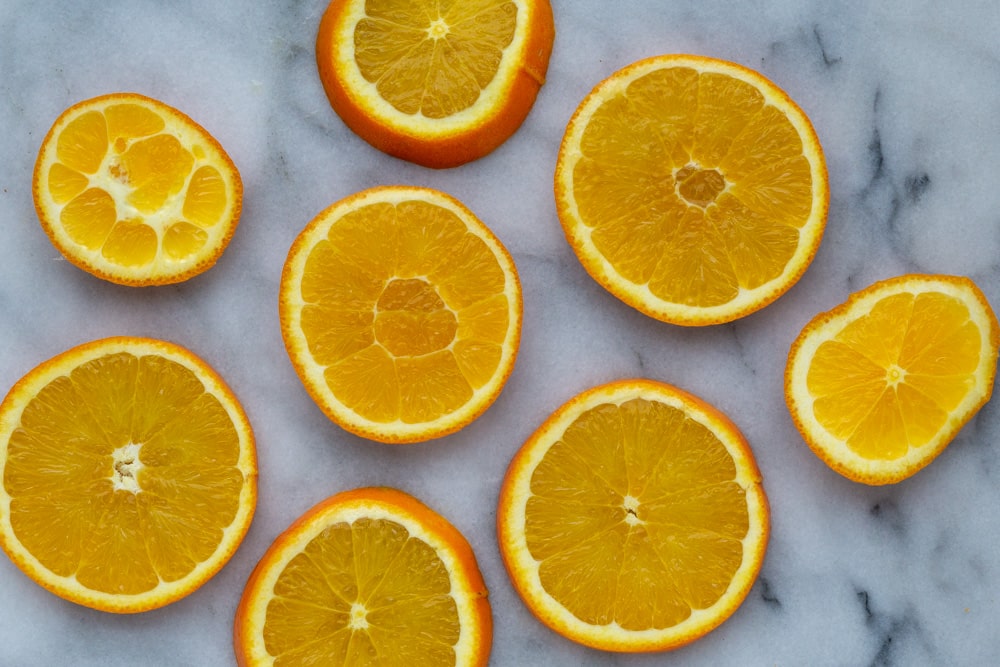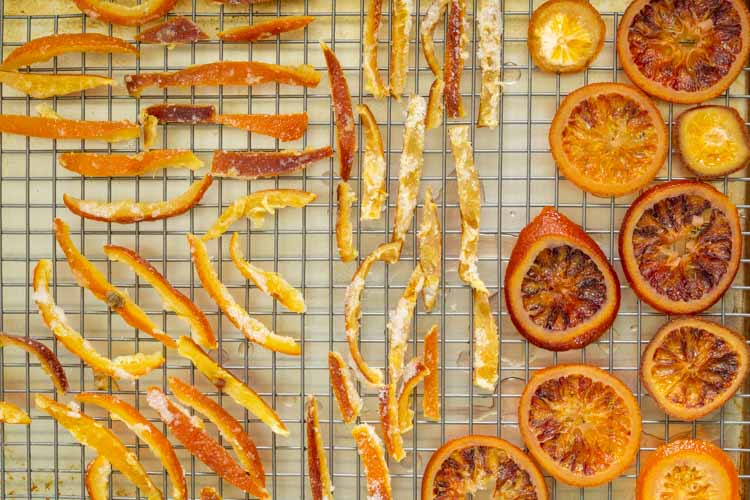Learn the science behind:

What Makes an Orange, Orange?
Oranges are orange. Not sure which was named first here, the fruit or the color? But, that’s not what we’re interested in anyway. We want to know, why do oranges have this bright, orange color? What is the underlying chemistry?
The orange color in oranges can be attributed to a specific group of molecules called carotenoids. Their unique chemical structure ensures light is reflected in such a way that we perceive the orange, as being orange!
Carotenoids color oranges orange
Oranges are orange, thanks to the presence of a group of molecules called carotenoids. Carotenoids are pigments, and can vary in color from white, to yellow, to yes, orange. As such, they don’t just give oranges their orange color, but are responsible for a lot of color in the citrus fruit family. Mandarins, minneolas, but also lemons have carotenoids to thank for their bright colors.
A mix of carotenoids
It’s not just one type of carotenoid that colors a piece of fruit. Instead, it’s generally a mix of carotenoids that make up a final color. Scientists have identified several hundreds different types of carotenoids. As such, a lot of different combinations are possible.
It’s also why not every orange is the exact same color of orange. They might contain slightly different concentrations or slightly different types of carotenoids. In oranges, some of the most important carotenoids responsible for its color tend to be violaxanthin and auroxanthin.
Peel vs juice carotenoids
The composition of carotenoids in the orange peel vs that in the orange juice are quite different in oranges. This results in a slightly different color of the two. But it is especially interesting for scientists, since somehow the color formation of the two seems to happen quite independently for the two parts of the orange.
Carotenoids all have a similar structure
So far, we’ve just assumed carotenoids are a group of molecules. What brings them together is that they all have a very similar structure, generally containing 40 carbon atoms and 4 terpene units.
A lot of sub-groups exist. For instance, carotenes are all made with 40 carbon and 56 hydrogen atoms (C40H56). By organizing and connecting these in different ways, a lot of different molecules can be made. In oranges, some of the most common carotenes are α- and β-carotene.

Another major sub-group consists of the xanthophylls. Apart from the carbon and hydrogen atoms, they also contain 2 oxygen atoms (making C40H56O2). Violaxanthin as well as zeaxanthin, both common in oranges, are xanthophylls.
Carotenoids’ structure gives color
So why do carotenoids make an orange look orange? To answer that question in greater detail, we have to look at how we see color.
Color is waves
Color is made up of light waves of a specific wavelength. When they enter our eyes, we perceive these waves as a specific color. Sunlight contains waves of all different length, making us perceive it as white. In order for something to have a color, only those waves with a specific length need to enter our eyes.
Color perception is surprisingly complex. Want to dig a little deeper, why not read How to Measure the Color of Food. Knowing how to measure, means understanding what it’s made of.
Molecules absorb and reflect light waves
Specific molecules can color a fruit or a vegetable by ensuring that only light of a specific wavelength is sent from that product, into our eyes. That is, these molecules can absorb or reflect waves of a specific length. In order to do so, these molecules need to have a specific structure that allows them to do so. Generally, these are quite large molecules with a lot of double bonds or ring structures. Many carotenoids fall into this group of molecules, interacting with light to give food color.

Orange’s color is quite stable
If you’ve cooked or baked with oranges, you might have realized that the orange color is actually quite stable. Even after baking, the orange zest in a cake will still be orange (though you might have to look closely to even see it!). Also after cooking orange peels for an extended time to make sugared peels, they’ll still be orange.
This is actually quite special. The purple color in red cabbage and the green color in broccoli both can’t handle heat and acidity changes as well as the orange color caused by carotenoids. This stability is again due to its structure. For instance, carotenoids are quite hydrophobic, they don’t like to sit in water. This makes them less susceptible to leaking out during cooking. Also, their overall structure simply isn’t much affected by heat!
Not all oranges are orange!
Blood oranges are purple/red and some oranges also still have some green coloring to them. Neither the green, nor the purple are caused by carotenoids. As a matter of fact, the carotenoids are overruled by other molecules in those instances!
Chlorophyll keeps them green
Before oranges turn orange, they are green. Only when ripening, under the right temperature conditions, do oranges turn orange. Part of this is due to an increase of the concentration of carotenoids. But, just as important is the decrease in the number of chlorophyll molecules. Chlorophyll is responsible for the green color in unripe oranges and it’s a very strong color. Only when enough chlorophyll has broken down can an orange turn orange!

Flavonoids make them purple
The purple color in blood oranges stems from a group of molecules called flavonoids, more specifically a sub-group called anthocyanins. These molecules have a slightly different structure again, causing them to reflect and absorb light in such a way that the blood oranges are no longer orange, but purple.
Chlorophyll, anthocyanins, carotenoids, these are some of the most important groups of color molecules naturally present in fruits and vegetables. But, there are even more, as we discuss in The Science of Color in Fruits and Vegetables.
Sources
Chunxian Chen, Pigments in Fruits and Vegetables – Chapter 8: Pigments in citrus, Apr-8 2015, p.165-173, link
Elsevier, Carotenoids as Colorants and Vitamin A Precursors: Technological and Nutritional Applications, Dec-2 2012, p.116-124, link
Milind Ladaniya, Citrus fruit: biology, technology and evaluation, 28-July 2010, p.230, link
E. A Rena, B. Fallico and E. M Accarone, Influence of Carotenoids and Pulps on the Color Modification of Blood Orange Juice, Journal of food science—Vol. 65, No. 3, 2000, link
Atilla Agocs, et al, Comparative study on the carotenoid composition of the peel and the pulp of different citrus species, Innovative Food Science & Emerging Technologies, Volume 8, Issue 3, September 2007, Pages 390-394, link
What's your challenge?
Struggling with your food product or production process? Not sure where to start and what to do? Or are you struggling to find and maintain the right expertise and knowledge in your food business?
That's where I might be able to help. Fill out a quick form to request a 30 minute discovery call so we can discuss your challenges. By the end, you'll know if, and how I might be able to help.




